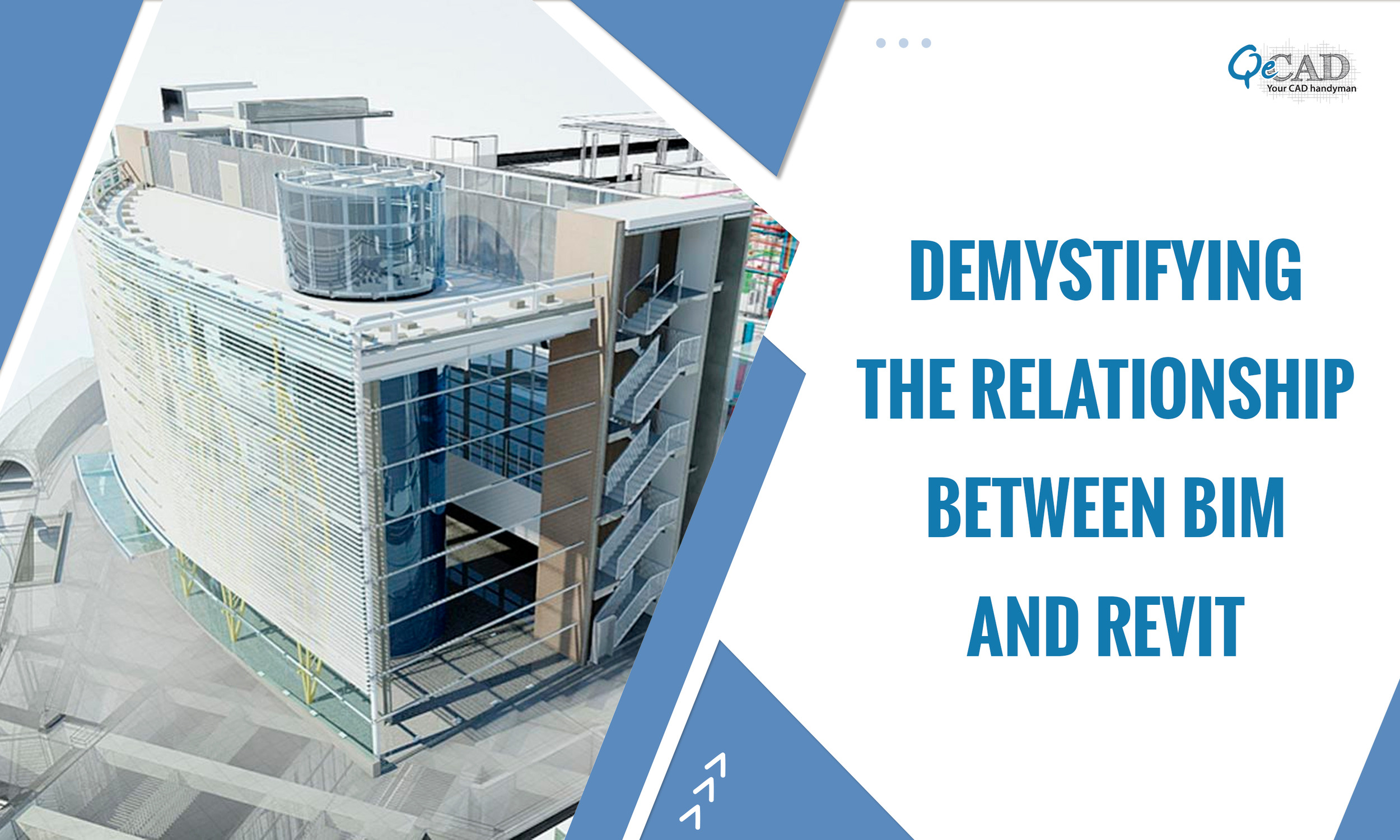Demystifying the Relationship between BIM and Revit

Introduction
Two terms often used interchangeably in the architecture, engineering, and construction (AEC) industry are Building Information Modelling (BIM) and Revit. While they are interrelated, it is important to understand that BIM and Revit are not the same thing. This blog post will clarify the misconception and delve into the differences between BIM and Revit, shedding light on their unique characteristics. By gaining a better understanding, we can appreciate the importance of both BIM and Revit in shaping the AEC industry.
Understanding BIM
Building Information Modelling (BIM) entails a cooperative approach, wherein digital representations of both the physical and functional attributes of a building are generated and overseen. BIM Modelling Services incorporates 3D modeling, data-rich objects, and intelligent information to provide a holistic approach to the construction process. It enables multidisciplinary collaboration, information sharing, and data integration, fostering better decision-making, increased efficiency, and reduced errors.
BIM acts as a digital twin of a building, allowing architects, engineers, contractors, and other stakeholders to work together seamlessly. By sharing and accessing project data in real time, BIM facilitates effective design, construction, operation, and maintenance through the entire lifecycle of a building. It offers a comprehensive platform where different software applications and processes can be utilized to visually represent the building structure.
The Power of Revit
Revit, developed by Autodesk, is a specific software application renowned for its capabilities in the realm of BIM. Revit is a powerful Building Information Modelling (BIM) tool designed to empower architects, engineers, and designers in the creation of sophisticated 3D models that embody intelligence and accuracy. It offers a high level of detail and accuracy, allowing users to design, analyze, and visualize the building's components and systems in a virtual environment.
Revit serves as a central hub where professionals from various disciplines can collaborate, share data, and make critical decisions through the design and construction process. It employs parametric modeling, which means that objects within the model are interconnected and carry rich information. When a change is made to one element, all related components automatically update, reducing errors and improving efficiency.
Differentiating BIM and Revit
It is important to recognize that Revit is just one tool within the BIM framework, but it is not synonymous with BIM itself. BIM encompasses a broader concept, incorporating various software applications, processes, and collaborative workflows. While Revit is widely used in BIM implementation, other software applications are available that can also be used to achieve the objectives of BIM.
By understanding this distinction, AEC professionals can effectively utilize BIM and Revit to enhance project outcomes. BIM provides the overarching methodology, guiding the collaborative processes and integrating various software tools, including Revit, to create a comprehensive digital representation of a building.
Conclusion
BIM and Revit are not the same thing, although they are related. BIM represents a collaborative approach to the construction process, utilizing digital models and data integration to improve decision-making and project outcomes. On the other hand, Revit is a powerful software application within the BIM framework, enabling the creation of detailed 3D models.
Both BIM and Revit have revolutionized the AEC industry by streamlining workflows, improving collaboration, and reducing errors. Understanding the differences between BIM and Revit is crucial for professionals to leverage the full potential of these tools. By embracing BIM and utilizing software applications like Revit for BIM Outsourcing Services, the industry can continue to evolve and shape a more efficient and innovative future in architecture, engineering, and construction.











 (2)649528671d8b5.jpg)
